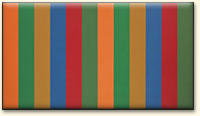Credits: Key Sources & Contributors
Key Sources
Marge Livingstone is Professor of Neurobiology at Harvard Medical School. She studies vision using anatomy, physiology, and human perception. Livingstone has a special interest in how the eye and brain use color and luminance information. She is also involved in studies of dyslexia and visual processing. Her research and book provide the foundation for many of the insights presented in this exhibit on luminance and peripheral vision.

Semir Zeki is professor of Neurobiology at UCL and co-head of the Wellcome Department of Cognitive Neurology. A Fellow of the Royal Society and member of the American Philosophical Society, he specializes in studying the visual brain. Recently, he has extended his work to include visual art, about which he has published articles and two books, Inner Vision and La Quête de l’Essentiel, coauthored with the late French painter, Balthus. His research and perspective provide the foundation for many of the insights presented in this exhibit on receptive fields and visual centers.
Contributors
Laura Joy Lustig is an artist based in New York City and has a BFA from Brooklyn College. Her exhibitions include MOMA (New York), Queens Museum of Art, A.I.R., Tompkins Square, and PaintBox (NYC).She specializes in abstract painting and photography, as well as hand-colored photography, and is interested in examining the relationships of painting to life. She has contributed to the interactivity of this exhibit by, among other things, re-coloring the paintings of Picasso and Dufy.

Outi Remes, MA, PhD is the Director of the New Ashgate Gallery, Surrey, and the Adjunct Associate Professor in Art History and Visual Culture at Richmond the American International University London. She also lectures at Birkbeck College, the University of London, and worked as the Head of Exhibitions at South Hill Park Arts Centre, Berkshire (2007-11). She is the co-editor of Conspiracy Dwellings: Surveillance in Contemporary Art (with Pam Skelton, 2010) and Beautiful Life: Memory and Nostalgia (with Dr Ming Turner, 2012) and in Afterimage: The Journal of Media Arts and Cultural Criticism and Women’s History Review.

Simone Mathews is a British art and design historian. Bilingual in English and Spanish, Mathews has lectured for renowned London institutions, including the National Gallery and the Victoria and Albert Museum, and has led many art tours throughout England and across mainland Europe. With a Master of Arts degree from University College, London, she has written and lectured extensively on many art- and art history-related subjects. She enjoys specializing in subjects such as Spanish art, British portraiture, and Interior Design (principally the 19th and 20th centuries). Her contributions to this exhibit are especially apparent in the sections on Impressionism and Neo-Impressionism.

Marion Arnold is an art historian and artist who lectured in South Africa for many years. Now a resident of Norfolk, she teaches part-time at the Universities of Loughborough and East Anglia, Birkbeck College, and Norwich School of Art and Design. Her research focuses on African art, Colonial art, Zimbabwean stone sculpture, South African women artists and botanical art. Recent publications include From Union to Liberation: South African Women Artists 1910-1994 (2005, Edited by Marion Arnold and Brenda Schmahmann) and South African Botanical Art: Peeling Back the Petals, 2001. Her contributions provided the basis for the African Art portion of this exhibit.
The Striped Background
The background of this exhibit is adapted from Orange and Green Bi-serial (1967) by Guido Molinari. He was a leader in the development of a rigorous color abstraction in Montréal. Characteristic of his 1960s paintings were vertical, hard-edged bands of color. Pictorial space in these paintings was created by the spectator’s perception of the shifting and mixing of the colors, which he achieved by using equiluminance. In the grey part of the background, near this page, you can see that Molinari intuitively used a blue and red strip which have nearly identical luminosities (same value of gray).
Learning interactively
Color Vision & Art incorporates interactivity into the educational material presented.
Incorporating interactivity into the learning experience allows certain subjects to be more easily taught. Interactivity also changes the dynamic of learning, from one of passivity to one of engagement. This enriches the learning experience and leads to better assimilation of information.
If you are interested in interactive education, you may find IDEA’s articles on interactivity useful.
When designing interactive lessons, it helps to be guided by theories about how people learn. Read IDEA’s articles about three theories of learning: Social Cognitive Theory, Constructivism and Cooperative Learning.



